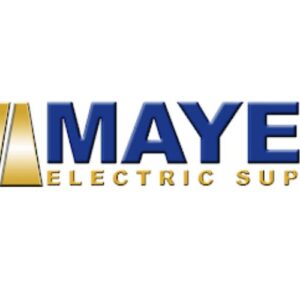Temporary Electrical Service: Everything You Need to Know
Temporary electrical service, often referred to as “temp power,” is a crucial aspect of various construction and renovation projects. Whether you’re building a new home, undergoing major renovations, or hosting a large event, temporary power provides the essential electricity needed to operate tools, equipment, and lighting. This comprehensive guide will delve into the intricacies of temporary electrical service, covering its applications, types, installation, safety considerations, and regulations.
What is Temporary Electrical Service?
Temporary electrical service is a temporary power supply that is installed for a limited period, typically during construction or renovation projects. It provides a safe and reliable source of electricity for powering tools, equipment, and lighting on site. Temporary electrical service is distinct from the permanent electrical system that will eventually be installed in a building. It is designed to be a temporary solution while the permanent infrastructure is being built.
Applications of Temporary Electrical Service
Temporary electrical service finds applications in a wide range of projects, including:
- Construction and Renovation: Temporary power is essential for powering tools, lighting, and equipment during construction and renovation projects. It ensures that workers have access to electricity for their tools and equipment, improving safety and productivity.
- Events and Gatherings: Temporary electrical service is crucial for powering lighting, sound systems, and other equipment at events and gatherings. It enables organizers to provide adequate illumination and entertainment for attendees.
- Emergency Situations: In the event of power outages, temporary electrical service can provide a vital lifeline for essential services, such as hospitals, schools, and businesses. It helps to minimize disruption and maintain critical operations.
- Industrial and Manufacturing: Temporary power is used in industrial and manufacturing settings for powering machinery, equipment, and lighting during temporary operations or expansions.
- Filming and Production: Temporary electrical service is essential for powering lighting, cameras, and other equipment used in film and television production. It provides a reliable source of power for on-location shoots.
Types of Temporary Electrical Service
Several types of temporary electrical service are available, each suited to different project needs:
- Generator Sets: Generator sets are self-contained power sources that produce electricity through the use of an engine. They offer a portable and reliable solution for temporary power, particularly in remote locations or areas without access to grid power.
- Transformer Service: Transformer service involves using a transformer to step down high-voltage power from the grid to a usable voltage for the project. This method is typically used when a significant amount of power is required.
- Temporary Power Poles: Temporary power poles are used to connect the temporary service to the grid. They are typically installed near the construction site and serve as a temporary point of connection for the power lines.
- Mobile Power Distribution Units: Mobile power distribution units provide a convenient and flexible way to distribute power within a construction site or event space. They come equipped with multiple outlets and circuits to accommodate various power requirements.
Installation of Temporary Electrical Service
The installation of temporary electrical service requires the expertise of qualified electricians. The process typically involves the following steps:
- Site Assessment: An electrician will assess the project site to determine the power requirements and identify the best location for the temporary service equipment. This includes considering the distance from the grid, the load requirements, and the layout of the construction site.
- Equipment Selection: Based on the power requirements, the electrician will select the appropriate temporary service equipment, including generator sets, transformers, power poles, or distribution units. The selection will also consider factors like the duration of the project, budget, and safety considerations.
- Installation: The electrician will install the temporary service equipment according to industry standards and local regulations. This may involve connecting the equipment to the grid, setting up the generator, or erecting power poles. The installation must be done by qualified personnel to ensure safety and proper functioning.
- Testing and Commissioning: Once the temporary service is installed, it must be thoroughly tested and commissioned to ensure it meets all safety requirements. This may involve checking the voltage, amperage, and ground fault protection systems.
Safety Considerations
Safety is paramount when working with temporary electrical service. It is crucial to follow all safety guidelines and regulations to prevent accidents and injuries. Some important safety considerations include:
- Proper Grounding: Ensure all temporary electrical equipment is properly grounded to prevent electrical shocks. The ground wire should be securely connected to a grounding electrode, such as a ground rod or grounding system.
- Use of Ground Fault Circuit Interrupters (GFCIs): GFCIs should be installed on all temporary power circuits to prevent electrical shocks. GFCIs detect changes in electrical current and interrupt the power flow to prevent electrocution.
- Overload Protection: Use circuit breakers or fuses to protect the temporary service from overloads. Overloads can occur when too much current flows through the circuit, potentially causing fires or damage to equipment.
- Use of Qualified Electricians: All work related to temporary electrical service should be performed by qualified electricians who are familiar with safety regulations and best practices. They should also have the necessary permits and licenses to work on electrical installations.
- Protective Gear: Workers should wear appropriate protective gear, such as rubber gloves, safety shoes, and eye protection, when working with temporary electrical service. This gear helps to minimize the risk of electrical shocks and other injuries.
- Clear Signage: Use clear and visible signage to warn others of the presence of temporary electrical service. This helps to prevent accidental contact with live wires or equipment.
- Regular Inspections: Regular inspections of the temporary service equipment should be conducted to ensure it remains safe and functional. This includes checking for loose connections, frayed wires, and other signs of wear or damage.
Regulations and Permits
Temporary electrical service is subject to various regulations and permits depending on the location and the project. It is crucial to comply with these regulations to ensure safety and legal compliance. Some common regulations and permits include:
- National Electrical Code (NEC): The NEC provides national standards for electrical installations, including temporary electrical service. Electricians must follow the NEC guidelines to ensure safe and compliant installations.
- Local Building Codes: Local jurisdictions may have specific building codes that apply to temporary electrical service. These codes may include requirements for permits, inspections, and safety standards.
- Utility Company Regulations: Utility companies that provide electricity to the grid have their own regulations for temporary service connections. These regulations may include requirements for permits, bonding, and inspection procedures.
- Permits: In many areas, permits are required for temporary electrical service installations. These permits ensure that the installation meets safety standards and local regulations.
- Inspections: Temporary electrical service installations are typically subject to inspections by qualified electrical inspectors. These inspections ensure that the installation meets safety standards and is properly grounded.
Cost of Temporary Electrical Service
The cost of temporary electrical service can vary depending on several factors, including:
- Power Requirements: The amount of power required for the project will significantly affect the cost. Higher power requirements necessitate larger generators or transformers, increasing the overall expense.
- Duration of the Project: The length of the project will also impact the cost. Longer projects will require ongoing rental fees or operational costs for generators or transformers.
- Location: The location of the project can influence the cost, particularly the proximity to the grid and the availability of power sources.
- Type of Service: The type of temporary electrical service chosen will also determine the cost. Generator sets, transformers, and power poles have varying installation and operational costs.
Conclusion
Temporary electrical service is a crucial component of construction, renovation, events, and emergency situations. By understanding the types of temporary service, installation procedures, safety considerations, and regulations, you can ensure the safe and reliable operation of power for your project. It is essential to hire qualified electricians for the installation and maintenance of temporary electrical service to minimize risks and ensure compliance with all applicable standards.





